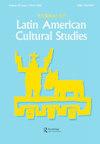Ecology, Rubble, and Disappearance. Reflections on the Costanera Sur Ecological Reserve in Buenos Aires
IF 0.3
4区 社会学
Q4 CULTURAL STUDIES
引用次数: 0
Abstract
The Costanera Sur Ecological Reserve is located on the central shore of Buenos Aires city, along the Río de la Plata. The foundations of this site are the product of the accumulated rubble that was deposited there by the city council during Argentina's last dictatorship (1976–1983), mainly with the purpose of settling a terrain for the construction of a new municipal Administrative Centre. However, the Administrative Centre was never built and the rubble was colonised by all sorts of flora and fauna coming down the river. After the dictatorship ended, the zone was designated as the “Parque Nacional y Reserva ecológica.” In this article we explore the Reserva as a visible and public space that evidences the ongoing dialectic of construction and destruction that underlies the projects for refurbishment carried out by the last civilian-military government. Taking this as our point of departure, we examine the ways in which the rubble – as the left-over material of the demolitions carried out by the dictatorship – is (re)connected to the space of the city and its history. We analyse the place that the rubble's illicit origin occupies in the history of the Reserva and how this space is conceived, used, and imagined today. Our argument is structured in three parts. In the first, we focus our investigation on the Reserva's genesis. In the second, we look at how the space of the Reserva is being rewritten by the neoliberal city council, which uses “ecological” discourse while deliberately overlooking the site's unlawful origin. In the third part, we explore uses of the concept of ecology that might foster a more profound understanding of the complexities of this terrain. We conclude with a reflection on the various uses and discourses that criss-cross the space of the Reserva today.生态、瓦砾和消失。对布宜诺斯艾利斯Costanera Sur生态保护区的思考
Costanera Sur生态保护区位于布宜诺斯艾利斯市的中央海岸,沿着Río de la Plata。该遗址的地基是阿根廷上一次独裁统治(1976年至1983年)期间市议会在那里堆积的瓦砾的产物,主要目的是为建造新的市政管理中心奠定地形。然而,行政中心从未建成,瓦砾中到处都是沿河而下的各种动植物。独裁统治结束后,该地区被指定为“国家公园和生态保护区”。在这篇文章中,我们将保护区探索为一个可见的公共空间,它证明了上一届文官军事政府进行的翻新项目所依据的建设和破坏的辩证法。以此为出发点,我们研究了瓦砾——独裁政权拆除的遗留材料——与城市空间及其历史的(重新)联系方式。我们分析了瓦砾的非法来源在保护区历史上所占据的位置,以及今天这个空间是如何被构思、使用和想象的。我们的论点分为三部分。在第一章中,我们重点研究了储层的成因。在第二部分中,我们观察了新自由主义的市议会是如何改写保护区的空间的,该市议会使用“生态”话语,同时故意忽视该遗址的非法起源。在第三部分中,我们探讨了生态学概念的使用,这可能会促进对这一地形复杂性的更深刻理解。最后,我们反思了当今Reservea空间中纵横交错的各种用途和话语。
本文章由计算机程序翻译,如有差异,请以英文原文为准。
求助全文
约1分钟内获得全文
求助全文

 求助内容:
求助内容: 应助结果提醒方式:
应助结果提醒方式:


